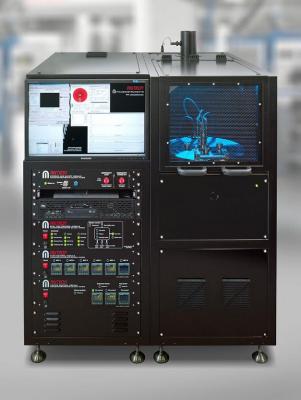Graphene-Info is happy to introduce a new feature: Experts Roundup. We asked several graphene professionals to answer a graphene related question. We hope this will prove to be an interesting read and can help shed light on the nooks and cranks of the graphene industry. Enjoy!
Do you think CVD will ever be a viable way to mass produce commercial graphene sheets?
Gonçalo Gonçalves, product marketing specialist, Aixtron: Chemical vapour deposition has been used for several decades in the semiconductor industry to deposit high-quality thin-films. This technique is known to provide superior process reliability and throughput which are key requirements in the manufacturing of integrated circuits. Since 2004, graphene has emerged as a wonder material with an impressive number of potential applications across several fields. The discovery of a CVD route to produce graphene has also been an important achievement towards the integration of this carbon nanomaterial into semiconductor devices. With the advance of the graphene field from basic to applied research new and more complex challenges arise, especially in the integration reliability. CVD technique will find its way to mass production of graphene once these challenges are addressed and the benefits of graphene in semiconductor devices are unveiled.

Dr. Elena Polyakova, CEO, Graphene 3D Lab: Not the way graphene films are grown now. It is way too expensive to grow graphene on copper and transfer to suitable substrates later. In addition, the density of defects is too high to be acceptable for industrial users.
Ray Gibbs, CEO, Haydale: My view is that CVD systems can be cost effective but the issue is the "release tape" to extricate the Graphene from the substrate. Horizon 20/20 has seen a proliferation of CVD systems to make single sheet Graphene but what are they going to do with it? On its own Graphene tends to curl, and in composites we know that GNPs work really well but often as a hybrid with other Nano particles . So right now CVD has problems in scale and applicability to the early adopters in composites, not forgetting the cost economics.
Khashayar Ghaffarzadeh, Director of Research, IDTechEx: The CVD process is inherently simple. The challenge is more in the transfer process. Different industries have scaled up and commercialized far more complex growth processes so this is more a question of whether the producers can identify, in the first instance, a series of niche markets that will pay a premium for CVD graphene or not. These stepping stones will be needed to help accumulate production experience, to help bring the costs down and to open up new markets. So for me it is more a question of markets than actual production technicalities.
graphene and beyond
i think the CVD is only the start but at the foundry/commercialization level needs some modified process though it may contain some main steps of CVD but the transfer is the real issue and at this i will prefer the roll to roll method.
Maybe it is not the best way
Maybe it is not the best way to ask companies who eatn their money with or without CVD graphene. Asking AIXTRON whether or not CVD Graphene is the way to go is a little bit rhetorical. That's their buisiness. Maybe you should ask Universities who know the benefits and disadvantages of CVD graphene because they are not prejudiced.